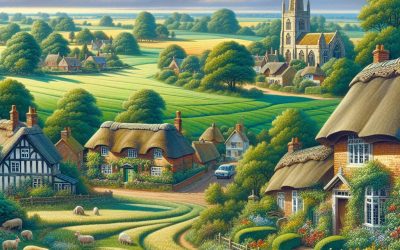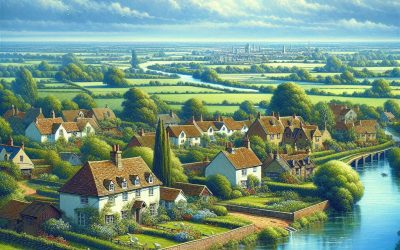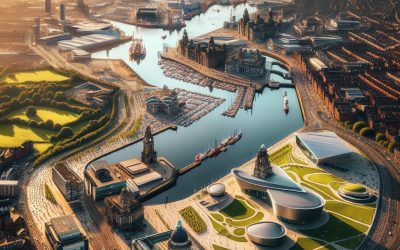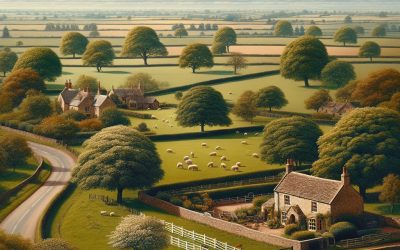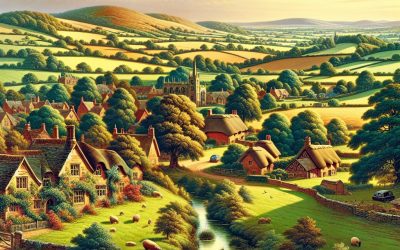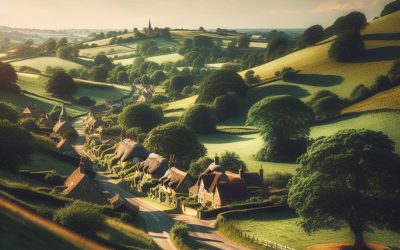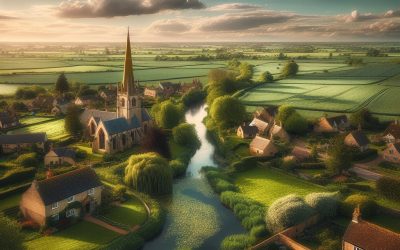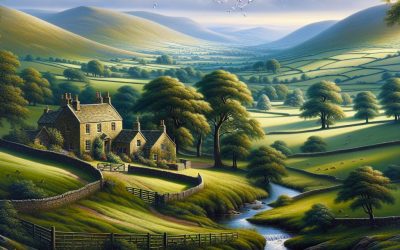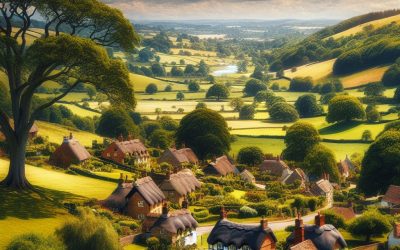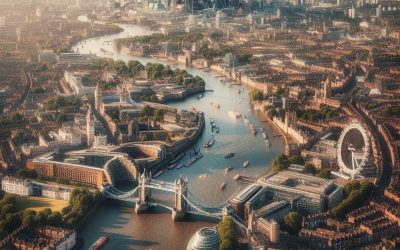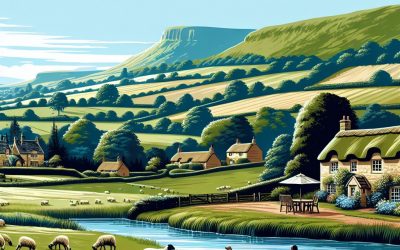World Geography
Geography is the study of the Earth’s landscapes, environments, and the relationships between people and their surroundings. It encompasses both the physical aspects of the Earth, such as its landforms, bodies of water, and climate, as well as the human aspects, including population distribution, cultures, and economies. World geography is a broad field that seeks to understand the complexities of our planet and how humans interact with it. By studying world geography, we can gain a deeper appreciation for the diversity of our planet and the interconnectedness of its various regions.
Geography is a multidisciplinary field that draws on elements of physical science, social science, and humanities. It involves the use of maps, spatial analysis, and geographic information systems (GIS) to understand the Earth’s surface and the processes that shape it. World geography also encompasses the study of human geography, which examines the ways in which people and their activities are distributed across the Earth. By understanding world geography, we can better appreciate the environmental, cultural, and economic challenges facing different regions of the world. This knowledge is crucial for addressing global issues such as climate change, resource management, and international development.
The Five Oceans and Seven Continents
The Earth’s surface is divided into five major oceans: the Pacific, Atlantic, Indian, Southern (or Antarctic), and Arctic Oceans. These vast bodies of water play a crucial role in regulating the Earth’s climate and supporting diverse marine ecosystems. The oceans also serve as important transportation routes and a source of food and other natural resources for human societies around the world.
In addition to the oceans, the Earth’s landmasses are divided into seven continents: Africa, Antarctica, Asia, Europe, North America, Australia (or Oceania), and South America. Each continent has its own unique physical and cultural characteristics, shaped by millions of years of geological processes and human history. From the deserts of Africa to the rainforests of South America, the continents offer a rich tapestry of landscapes and environments for exploration and study.
Major Mountain Ranges and Deserts
The Earth’s surface is also marked by major mountain ranges and deserts that have shaped the planet’s physical and cultural landscapes. The Himalayas, for example, are the highest mountain range in the world and are home to diverse ecosystems and cultures in countries such as India, Nepal, and Bhutan. The Andes in South America, the Rockies in North America, and the Alps in Europe are other prominent mountain ranges that have influenced human settlement patterns and economic activities.
Deserts cover about one-third of the Earth’s land surface and are characterized by low precipitation and extreme temperatures. The Sahara Desert in Africa is the largest hot desert in the world, while the Gobi Desert in Asia is one of the largest cold deserts. Deserts are not only home to unique flora and fauna but have also been important trade routes and cultural crossroads throughout history.
Climate Zones and Biomes
The Earth’s climate is influenced by a variety of factors, including latitude, altitude, ocean currents, and prevailing winds. As a result, the planet is divided into different climate zones, each with its own characteristic weather patterns and ecosystems. The equator, for example, experiences a tropical climate with high temperatures and heavy rainfall, while the polar regions have a cold and dry climate.
These climate zones give rise to different biomes, or large ecological areas characterized by distinct plant and animal communities. The tropical rainforest biome, found near the equator, is home to a diverse array of species and is vital for regulating the Earth’s climate. The grasslands biome, found in regions such as the African savannah and North American prairies, supports grazing animals and has been important for human agriculture throughout history.
Human Geography and Population Distribution
Human geography examines the ways in which people and their activities are distributed across the Earth’s surface. It encompasses topics such as population growth, migration patterns, urbanization, and cultural diversity. Understanding human geography is crucial for addressing global challenges such as poverty, inequality, and environmental degradation.
Population distribution is uneven across the world, with some regions experiencing rapid population growth while others are declining. The majority of the world’s population lives in Asia, particularly in countries such as China and India. Urban areas are also growing rapidly, with more than half of the world’s population now living in cities. This trend has significant implications for infrastructure development, resource management, and social inequality.
Historical and Cultural Geography
Historical geography examines how human activities have shaped the Earth’s landscapes over time. It explores topics such as colonialism, trade routes, and the rise and fall of empires. Cultural geography focuses on how human cultures have developed in different regions of the world and how they interact with their environments.
The Silk Road, for example, was an ancient trade route that connected China with Europe and facilitated the exchange of goods, ideas, and technologies across Eurasia. This historical trade route had a profound impact on the development of cultures and economies along its path. Similarly, cultural geographers study how different societies have adapted to their environments through practices such as agriculture, architecture, and religious beliefs.
The Importance of Geographic Knowledge
Geographic knowledge is crucial for addressing global challenges such as climate change, resource management, and international development. By understanding world geography, we can better appreciate the environmental, cultural, and economic challenges facing different regions of the world. This knowledge is crucial for addressing global issues such as climate change, resource management, and international development.
Geographic knowledge also helps us to understand our interconnectedness with other regions of the world. By studying world geography, we can gain a deeper appreciation for the diversity of our planet and the interconnectedness of its various regions. This understanding can foster a sense of global citizenship and empathy for people from different cultures and backgrounds.
In conclusion, world geography is a complex and multifaceted field that encompasses both physical and human aspects of the Earth’s landscapes. By studying world geography, we can gain a deeper appreciation for the diversity of our planet and the interconnectedness of its various regions. This knowledge is crucial for addressing global challenges such as climate change, resource management, and international development. It also helps us to understand our interconnectedness with other regions of the world and fosters a sense of global citizenship.
FAQs
What is world geography?
World geography is the study of the Earth’s landscapes, environments, and the relationships between people and their environments. It encompasses the physical features of the Earth, as well as the human activity that takes place on it.
Why is world geography important?
World geography is important because it helps us understand the world around us. It provides insights into the physical and human processes that shape our planet, and helps us make informed decisions about how to interact with our environment.
What are the main branches of world geography?
The main branches of world geography include physical geography, which focuses on the Earth’s natural features and processes, and human geography, which examines the relationships between people and their environments.
How does world geography impact our daily lives?
World geography impacts our daily lives in numerous ways, from influencing the weather and climate we experience, to shaping the availability of natural resources and influencing the distribution of populations and cultures around the world.
What are some key concepts in world geography?
Key concepts in world geography include location, place, human-environment interaction, movement, and region. These concepts help geographers understand and interpret the world around them.
Norfolk, England
Norfolk is a county located in East Anglia, England. It is known for its rich history, natural beauty, and cultural highlights. With its stunning coastline, picturesque countryside, and charming towns and villages, Norfolk offers a diverse range of attractions for visitors to explore. Summary Norfolk is a county in England with a rich history dating back to Roman times. Visitors can explore top attractions such as Norwich Cathedral and Sandringham Estate. Norfolk’s natural beauty includes stunning coastline and countryside perfect for outdoor activities. The county’s food and drink scene features local produce and fine dining options. Cultural highlights include museums, galleries, and theatres, while festivals and events celebrate Norfolk’s heritage. History of Norfolk: From Roman Times to the Present Day Norfolk has a fascinating history that dates back to Roman times. The county was once part of the Roman province of Britannia and was home to several important settlements, including the town of Venta Icenorum, which was the capital of the Iceni tribe. During the Anglo-Saxon period, Norfolk became an important center of trade and commerce. The town of Norwich, which is now the county’s capital, was founded by the Anglo-Saxons in the 5th century and quickly grew into a thriving city. In the Viking era, Norfolk was frequently raided by Viking invaders. The county’s strategic location on the east coast made it an attractive target for Viking ships. However, the Vikings were eventually defeated by the Anglo-Saxons and Norfolk remained under English control. Norfolk played a significant role in the Industrial Revolution, with many towns and villages becoming centers of industry and manufacturing. The county’s ports and...
Middlesex, England
Middlesex, located in the southeast of England, is a county with a rich history that dates back centuries. Originally established as a Saxon settlement, Middlesex has played a significant role in shaping the history and culture of England. From its picturesque countryside to its historic landmarks and vibrant cultural scene, Middlesex offers visitors a diverse range of experiences. In this blog post, we will explore the beauty of Middlesex’s countryside, discover its top attractions, delve into its cultural scene, learn about its role in the Industrial Revolution, celebrate its notable figures, and immerse ourselves in its local festivals and events. We will also explore Middlesex’s sporting heritage and provide tips for planning your visit to this fascinating county. Summary Middlesex is a county with a rich history, dating back to the Roman era. The countryside of Middlesex is beautiful and offers plenty of opportunities for outdoor activities. Middlesex has a range of top attractions, from historic landmarks to modern marvels. Visitors to Middlesex can enjoy a variety of shopping, eating, and drinking experiences. Middlesex has a vibrant cultural scene, with museums, galleries, and theatres to explore. Exploring the Beautiful Countryside of Middlesex Middlesex is blessed with beautiful countryside that offers a peaceful escape from the hustle and bustle of city life. The county is home to numerous parks, gardens, and nature reserves that are perfect for nature lovers. One such place is Richmond Park, a vast expanse of greenery that is famous for its deer population. Visitors can enjoy leisurely walks or bike rides through the park while taking in the stunning views of the surrounding landscape. Another...
Merseyside, England
Merseyside is a county located in the North West of England. It is named after the River Mersey, which runs through the county and has played a significant role in its history and development. The county is home to several major cities and towns, including Liverpool, the largest city in Merseyside and one of the most famous cities in the UK. Other notable cities and towns in Merseyside include Birkenhead, St Helens, and Southport. Summary Merseyside is a metropolitan county in the North West of England, with a population of over 1.4 million people. The region has a rich history, from its role in the Industrial Revolution to its vibrant cultural scene today. Merseyside has a temperate maritime climate, with mild winters and cool summers. The area is known for its contributions to music, literature, and film, with famous artists such as The Beatles and Willy Russell hailing from the region. Merseyside is home to several successful sports teams, including Liverpool and Everton football clubs, as well as a thriving tourism industry. History of Merseyside: From Industrial Revolution to Today Merseyside has a rich history that dates back centuries. It played a crucial role in the Industrial Revolution, with its ports and waterways becoming major hubs for trade and industry. Liverpool, in particular, became one of the world’s leading ports during this time, with goods from all over the world passing through its docks. Over time, Merseyside has evolved and adapted to changing economic and social conditions. The decline of traditional industries such as shipping and manufacturing in the late 20th century led to significant challenges for the...
Lincolnshire, England
Located in the East Midlands region of England, Lincolnshire is a county with a rich history and stunning natural beauty. It is bordered by several counties including Norfolk, Cambridgeshire, and Nottinghamshire. The county has a diverse landscape, ranging from rolling hills and picturesque countryside to charming coastal towns and beautiful beaches. Lincolnshire has a fascinating history that dates back thousands of years. It was once inhabited by the Celts and later became part of the Roman Empire. The county is also known for its connections to the medieval period, with many castles and historic sites still standing today. Lincoln Cathedral, one of the most iconic landmarks in the county, is a testament to the rich history of Lincolnshire. In addition to its historical significance, Lincolnshire is also known for its natural beauty. The Lincolnshire Wolds, an Area of Outstanding Natural Beauty, is a stunning landscape of rolling hills, picturesque valleys, and charming villages. The Fens, on the other hand, offer a unique and tranquil environment with its flat marshlands and waterways. Summary Lincolnshire is a county with a rich history and natural beauty. The countryside of Lincolnshire, from the Wolds to the Fens, is full of charm and beauty. Lincolnshire’s coastal towns and beaches are gems waiting to be explored. The cultural heritage of Lincolnshire is diverse, from medieval castles to modern art galleries. Lincolnshire’s food and drink scene is a must-try, with local delicacies and traditional ales. Discovering the Charm of Lincolnshire’s Countryside: From the Wolds to the Fens One of the highlights of visiting Lincolnshire is exploring its beautiful countryside. The Lincolnshire Wolds, often referred to...
Leicestershire, England
Leicestershire, located in the heart of England, is a county that is rich in history, natural beauty, and cultural offerings. From its Roman roots to its bustling modern cities, Leicestershire has something to offer everyone. In this blog post, we will explore the diverse attractions and experiences that make Leicestershire a must-visit destination. Whether you are interested in exploring its historical landmarks, immersing yourself in its natural beauty, or indulging in its vibrant cultural scene, Leicestershire has it all. Summary Leicestershire has a rich history dating back to Roman times and boasts famous landmarks such as castles, cathedrals, and stately homes. The county is home to beautiful parks, reserves, and waterways, making it a great destination for nature lovers. Leicestershire has a thriving cultural scene with art, music, and theatre events happening throughout the year. Visitors can enjoy the best shopping and dining experiences in Leicestershire, with a range of options to suit all tastes and budgets. Sports fans can discover Leicestershire’s sporting heritage, including football, cricket, and rugby, while festival-goers can enjoy top events throughout the year. The History of Leicestershire: From Roman Times to the Present Day Leicestershire has a long and fascinating history that dates back to Roman times. The county was once an important Roman settlement and evidence of this can still be seen today in the form of the Jewry Wall and the remains of the Roman baths. Throughout the centuries, Leicestershire has been home to many key historical events and figures. One such figure is King Richard III, whose remains were famously discovered under a car park in Leicester in 2012. The...
Lancashire, England
Lancashire is a county located in the North West of England. It is bordered by the counties of Cumbria to the north, Greater Manchester to the east, Merseyside to the south, and North Yorkshire to the east. Lancashire has a rich history that dates back to Roman times, and it played a significant role in England‘s industrial revolution. The county of Lancashire has a long and fascinating history. It was originally part of the Kingdom of Northumbria, but it later became part of the Kingdom of Mercia. In the 12th century, Lancashire became a county in its own right, and it was granted a royal charter by King Henry Lancashire played an important role in the Wars of the Roses, with battles taking place in the county. Lancashire’s industrial revolution began in the late 18th century with the growth of the cotton industry. The county became known as the “workshop of the world” due to its large number of cotton mills. These mills were powered by water from rivers and streams, and they produced vast quantities of cotton goods that were exported around the world. The cotton industry brought great wealth to Lancashire and transformed it into one of the most industrialized regions in England. Summary Lancashire is a historical county in North West England with a rich industrial heritage. The county boasts beautiful countryside, including the Trough of Bowland and the Forest of Bowland. Lancashire’s coastal towns and cities, such as Blackpool and Morecambe, are popular tourist destinations. The county has a vibrant cultural scene, with a focus on literature, music, and art. Lancashire is known for its...
Kent, England
Kent, known as the “Garden of England,” is a county located in the southeastern part of England. It is renowned for its picturesque landscapes, charming villages, and rich history. With its nickname and reputation as a beautiful county, Kent attracts visitors from all over the world. In this blog post, we will explore the history, geography, culture, economy, education, tourism, sports, transport, and quality of life in Kent. Summary Kent is known as the Garden of England, with its beautiful countryside and gardens. The county has a rich history dating back to Roman times, with many historic sites to visit. Kent’s geography is diverse, with a mix of coastal areas, rolling hills, and charming villages. The culture and traditions of Kent are celebrated through festivals, food, and drink. Kent’s economy is diverse, with industries ranging from agriculture to technology. History of Kent: From Roman Times to the Present Day Kent has a long and fascinating history that dates back to Roman times. The Romans occupied the area in the 1st century AD and left their mark on the county with the construction of forts, villas, and roads. The Anglo-Saxons and Vikings later invaded Kent, bringing their own culture and traditions. In the medieval period, Canterbury Cathedral became a major religious center and pilgrimage site. The Tudor and Stuart eras saw significant developments in trade and industry. During the Industrial Revolution, Kent became a hub for manufacturing and transportation. In modern times, it has continued to thrive as a diverse and vibrant county. Geography of Kent: A Coastal County with Rolling Hills and Charming Villages Kent is blessed with...
Huntingdonshire, England
Huntingdonshire, located in the eastern part of England, is a historic county with a rich and fascinating history. It is bordered by Northamptonshire to the west, Bedfordshire to the south, Cambridgeshire to the east, and Lincolnshire to the north. The county has played a significant role in English history, with its roots dating back to Roman times. Huntingdonshire was once an important administrative and judicial center, and its strategic location made it a key area during various conflicts throughout history. Summary Huntingdonshire is a historic county in England with a rich history dating back to Roman times. The geography and landscape of Huntingdonshire is a visual delight, with rolling hills, rivers, and picturesque villages. Huntingdonshire is home to famous people and landmarks, making it a popular tourist destination. The county has a strong agricultural heritage, with farms and fields dominating the landscape. Huntingdonshire is a haven for nature lovers, with wildlife and nature reserves scattered throughout the county. The Geography and Landscape of Huntingdonshire: A Visual Delight Huntingdonshire boasts a diverse and picturesque landscape that is sure to captivate visitors. The county is characterized by rolling hills, lush green fields, and charming villages. The River Great Ouse flows through the heart of Huntingdonshire, adding to its natural beauty. The county is also home to several nature reserves and parks, providing ample opportunities for outdoor activities such as hiking, birdwatching, and picnicking. One of the most scenic spots in Huntingdonshire is Grafham Water, a reservoir surrounded by woodlands and meadows. It offers a range of recreational activities including sailing, fishing, and cycling. Another must-visit location is Hinchingbrooke Country Park, which...
Hertfordshire, England
Hertfordshire, located in the East of England, is a county with a rich history and vibrant culture. It is bordered by Bedfordshire to the north, Cambridgeshire to the northeast, Essex to the east, Buckinghamshire to the west, and Greater London to the south. The county has a long and fascinating history, with evidence of human habitation dating back to the Mesolithic period. Throughout the centuries, Hertfordshire has been home to various settlements and has played a significant role in shaping the history of England. Hertfordshire is known for its cultural significance, with numerous historical landmarks, museums, galleries, and theatres. The county has been a source of inspiration for many artists and writers over the years. It is also home to several prestigious educational institutions and has a thriving business hub. Whether you are interested in exploring its natural beauty, delving into its history, immersing yourself in its arts and culture scene, or enjoying its sporting heritage, Hertfordshire has something for everyone. Summary Hertfordshire boasts a rich history and culture, with plenty of natural beauty to explore. Visitors can discover historic landmarks such as castles, abbeys, and stately homes. The county’s vibrant towns offer shopping, dining, and entertainment hotspots. Hertfordshire has a thriving arts and culture scene, with museums, galleries, and theatres to explore. Sports fans can enjoy football, rugby, and cricket clubs, while education and business opportunities abound. Exploring the Natural Beauty of Hertfordshire: From Countryside Walks to Picturesque Villages Hertfordshire is blessed with beautiful countryside and picturesque villages that are perfect for exploring on foot. The county is known for its rolling hills, meandering rivers, and lush...
Hampshire, England
Hampshire is a county located on the southern coast of England. It is known for its rich history, natural beauty, cultural offerings, and more. In this blog post, we will explore Hampshire’s highlights and showcase why it is a must-visit destination. Whether you are interested in history, outdoor activities, culinary delights, or cultural experiences, Hampshire has something for everyone. Summary Hampshire is a quintessential English county with a rich history, natural beauty, and cultural offerings. The county boasts Roman settlements, medieval times, picturesque villages, and historic cities. Hampshire’s countryside and coastline offer opportunities for hiking, biking, and water sports. The culinary scene features traditional dishes and modern cuisine, and shopping ranges from high street brands to independent boutiques. Festivals and events celebrate Hampshire’s heritage and culture, and practical information is available for planning your trip. Hampshire’s Rich History: From Roman Settlements to Medieval Times Hampshire has a fascinating history that dates back to Roman times. The county was once home to several Roman settlements, including the important town of Venta Belgarum, which is now modern-day Winchester. Winchester Cathedral, located in the heart of the city, is one of Hampshire’s most iconic historical sites. It is the longest medieval cathedral in Europe and is known for its stunning architecture and rich history. Another historical site worth visiting in Hampshire is Portchester Castle. This well-preserved castle dates back to Roman times and offers visitors a glimpse into the county’s past. The castle played a significant role in defending the coast and was later used as a prison during the Napoleonic Wars. The Natural Beauty of Hampshire: Exploring the Countryside and...
Greater London, England
Greater London, often referred to simply as London, is the capital city of England and the United Kingdom. It is one of the most important and influential cities in the world, known for its rich history, diverse culture, and thriving economy. With a population of over 8 million people, it is also one of the most populous cities in Europe. Summary Greater London has a rich history dating back to Roman times and has grown into a diverse and vibrant city. The city’s geography and climate vary from the bustling urban center to the peaceful countryside. Greater London is home to a diverse population, with over 8 million people from different backgrounds and cultures. The city’s economy is a hub of business and finance, with many international companies and financial institutions based in the city. Greater London is a cultural and entertainment hub, with a thriving arts scene, world-class museums, and a vibrant nightlife. History of Greater London: From Roman Times to the Present Day The history of Greater London dates back to Roman times when it was founded as a settlement called Londinium. Over the centuries, it has witnessed numerous significant events and milestones that have shaped its development. From the Norman Conquest in 1066 to the Great Fire of London in 1666, the city has experienced both triumphs and tragedies. One of the key moments in London’s history was the Industrial Revolution in the 19th century, which brought about rapid urbanization and economic growth. The city became a major center for trade, finance, and industry, attracting people from all over the world. In the 20th century,...
Gloucestershire, England
Gloucestershire, located in the South West of England, is a county known for its stunning natural beauty, rich history and heritage, charming villages, and delicious food and drink. With its picturesque landscapes, historic sites, and vibrant cultural scene, Gloucestershire is a great destination for travelers looking to explore the best of what England has to offer. Summary Gloucestershire is a county in South West England known for its natural beauty, charming villages, and rich history and heritage. The county has a long and fascinating history, with notable landmarks such as Tewkesbury Abbey and Gloucester Cathedral. Visitors can explore the stunning Cotswolds, Forest of Dean, and Wye Valley, which offer a range of outdoor activities and picturesque scenery. Gloucestershire’s villages, such as Bourton-on-the-Water and Bibury, are famous for their quaint charm and traditional architecture. Foodies will love Gloucestershire’s local delicacies, including cheese, cider, and the famous Gloucester Old Spot pork, while culture vultures can enjoy the county’s thriving arts scene and numerous festivals. History and Heritage of Gloucestershire Gloucestershire has a fascinating history that dates back thousands of years. The county was once part of the Roman Empire and was an important center for trade and commerce. Today, visitors can explore the remnants of this ancient civilization at sites such as the Roman Baths in Bath and the Cirencester Amphitheatre. In addition to its Roman heritage, Gloucestershire is also home to several historic sites from the medieval period. One of the most famous is Tewkesbury Abbey, a stunning example of Norman architecture that dates back to the 12th century. Other notable historical sites include Berkeley Castle, Sudeley Castle,...
